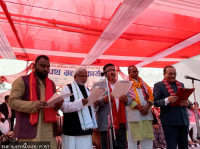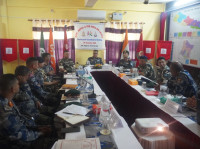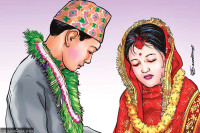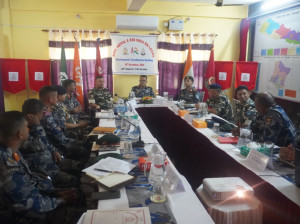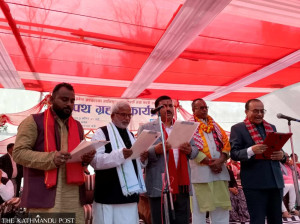Madhesh Province
Federalism fuels Janakpur’s demographic boom
The sub-metropolis’s population growth has nearly doubled the national average, according to a latest report.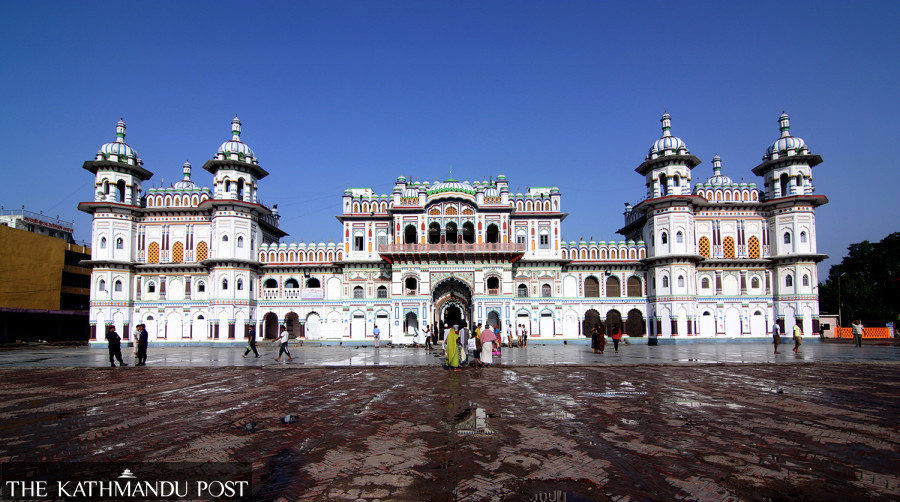
Post Report
Janakpur, the capital city of Madhesh Province, has emerged as a hub of attraction for people from nearby areas since Nepal transitioned to a federal system effectively from 2017. Known as a religious and touristic city, Janakpur has seen a surge in population as it developed into an administrative centre. Stakeholders say that the declaration of Janakpur as the provincial capital has drawn people to the city for business, employment, education, and other opportunities.
According to a recent demographic report by Janakpurdham Sub-Metropolitan City based on the 2021 National Census and published in December 2024, the city’s population growth rate is nearly double the national average.
While Nepal’s population growth rate between the 2011 and 2021 censuses was 0.92 percent, Janakpur’s growth rate stands at 1.75 percent, according to the report. The report, prepared by the National Statistics Office (NSO), also shows that Janakpur has excelled in many indicators over the past decade.
The report reveals that Janakpurdham’s population has risen from 162,172 in 2011 to 194,556 in 2021. Among them, 94,792 are females and 99,764 are males, resulting in a gender ratio of 105.2.
According to NSO Director and Chief of the Population Branch, Dhundiraj Lamichhane, this gender ratio, which exceeds the national average of 95.5, is a positive indicator.
“A gender ratio above 100 means there are more males than females in the area,” says Lamichhane.
“While females have outnumbered males in Nepal for decades, the higher number of males in the Tarai region suggests the presence of better employment opportunities for men. In Janakpur, this trend is linked to the city’s thriving industries and businesses, which have reduced the need for men to migrate abroad for work,” he adds.
Around 20 percent of the city’s total population comprises migrants from other municipalities or districts, a trend that experts say is steadily rising.
The report also shows a strong youth presence in Janakpurdham. Individuals aged 16 to 40 years make up 44.4 percent of the population, underscoring the city’s robust human resource potential.
Similarly, 61 percent of Janakpur’s population falls within the economically active age group (15 to 59 years), while the proportion of dependent populations, children and elderly, is comparatively low.
While Nepal’s elderly population (aged 60 and above) is 10 percent of the total, Janakpur’s stands at only 8.6 percent.
The report also indicates an improvement in the city’s economic and social conditions. The percentage of households using gas for cooking has nearly doubled, from 40.4 percent in 2011 to 72.4 percent in 2021.
The percentage of households without toilets has decreased from 30.9 percent to 7.2 percent over a decade. Women owning both house and land titles account for 20.1 percent of the population. Despite being a sub-metropolitan city, nearly one-third of the population lives in rural areas, with 67 percent residing in urban areas and 33 percent in rural areas, according to Lamichhane.
Janakpurdham’s literacy rate stands at 76.6 percent, but female literacy lags at 63.7 percent. Four groups in the city have literacy rates below 55 percent, with the lowest rates recorded among the Bin (52.6 percent), Chamar (53.9 percent), and Khatwe (54.7 percent), all of which are Dalit.
Mayor Manoj Kumar Sah stated that the demographic report has filled a long-standing gap in data availability for the sub-metropolitan city. After receiving the report from NSO Secretary Madhusudan Burlakoti, Mayor Shah pledged to use it as a basis for planning and budgeting.
“While data is never complete and needs regular updates, this report provides a foundational reference for the municipality,” he said. “We will also make sure it is updated periodically.”




 8.12°C Kathmandu
8.12°C Kathmandu